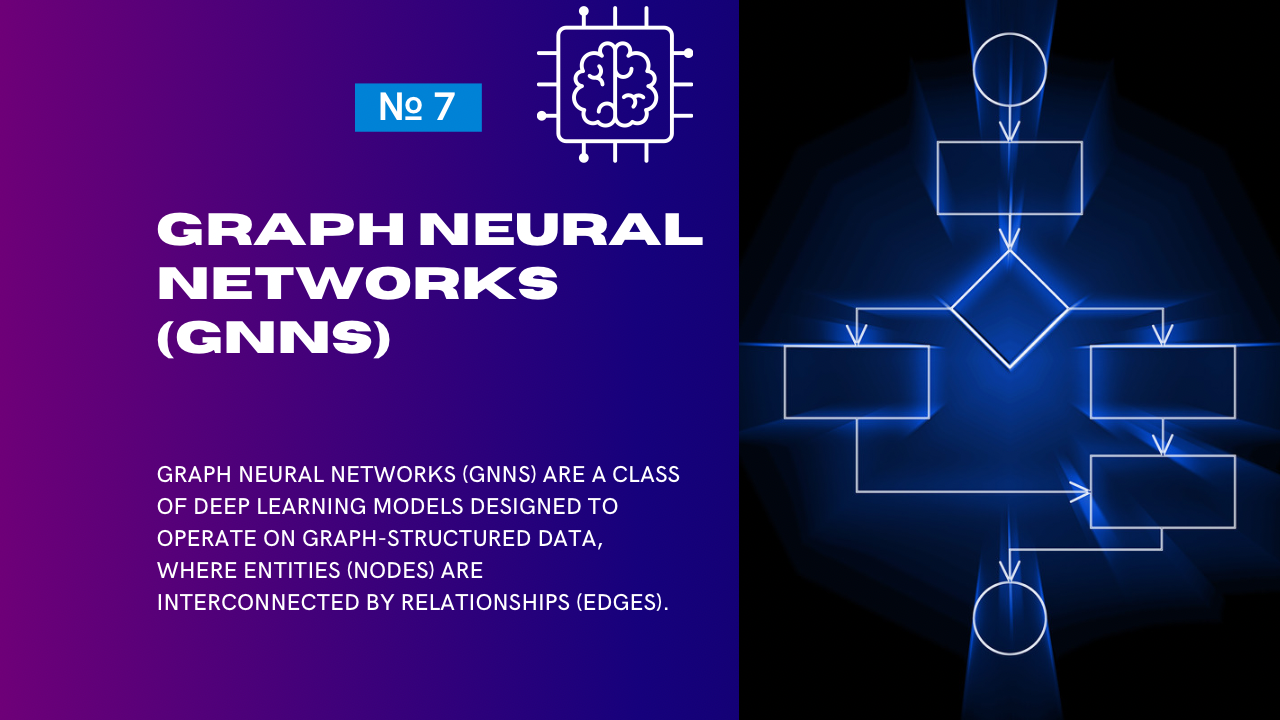Graph Neural Networks (GNNs) are a class of deep learning models designed to operate on graph-structured data, where entities (nodes) are interconnected by relationships (edges). Their ability to model complex relationships and dependencies makes them a powerful tool across various domains.
Key Characteristics of GNNs
- Graph Representation: GNNs process data represented as graphs, enabling models to capture the structure and connections between nodes.
- Message Passing: Nodes in the graph exchange information with their neighbors during the learning process, aggregating local and global context.
- Inductive and Transductive Learning: GNNs can generalize to unseen nodes (inductive) or operate on a fixed graph (transductive).
Applications of GNNs
1. Social Networks
GNNs are widely used in social network analysis, where the relationships between users are critical.
| Use Case | Description | Examples |
|---|---|---|
| Community Detection | Identifying groups of closely connected users in social networks. | Detecting interest-based communities on platforms like Facebook or LinkedIn. |
| Recommendation Systems | Generating personalized recommendations based on user interactions and relationships. | Pinterest’s PinSage uses GNNs for content recommendations. |
| Influence Propagation | Modeling how information or trends spread through a network. | Predicting viral content on Twitter or TikTok. |
| Fraud Detection | Identifying suspicious behavior patterns based on user connections and activity. | Detecting fake accounts or malicious bots on social platforms. |
2. Biology
In biology, GNNs are applied to model molecular interactions, biological networks, and protein structures.
| Use Case | Description | Examples |
|---|---|---|
| Drug Discovery | Predicting interactions between molecules and drug compounds. | Graph-based models for predicting drug efficacy or toxicity. |
| Protein Structure Prediction | Modeling the 3D structure of proteins using graph representations of atoms and bonds. | AlphaFold incorporates GNN principles for protein folding. |
| Genomic Analysis | Understanding relationships between genes in regulatory networks. | Identifying gene mutations associated with diseases. |
| Cellular Interaction Modeling | Simulating how cells interact in complex biological systems. | Cancer research and immunotherapy modeling. |
3. Logistics
Logistics and supply chain optimization benefit greatly from GNNs’ ability to handle networked data, such as transportation routes and supply chains.
| Use Case | Description | Examples |
|---|---|---|
| Route Optimization | Identifying optimal paths in transportation networks to reduce costs and delivery times. | Optimizing delivery routes for companies like Amazon or UPS. |
| Supply Chain Management | Modeling dependencies and interactions between suppliers, manufacturers, and distributors. | Minimizing delays and optimizing inventory flows. |
| Traffic Prediction | Analyzing road networks to predict traffic patterns and congestion. | Smart city traffic management systems. |
| Network Resilience Analysis | Assessing vulnerabilities and redundancies in logistics networks. | Ensuring robustness in critical supply chains. |
Strengths of GNNs for These Domains
- Relational Modeling: GNNs excel in capturing the relationships and dependencies between entities.
- Scalability: Modern GNN architectures can handle large-scale graphs efficiently using techniques like sampling (e.g., GraphSAGE).
- Generalization: GNNs can generalize to unseen nodes and graphs, making them adaptable to dynamic systems.
- Interpretability: Node and edge importance can often be visualized, providing insights into key relationships.
Popular GNN Architectures
- GCN (Graph Convolutional Networks): Focused on aggregating neighborhood information using convolutional operations.
- GraphSAGE: Designed for inductive learning by sampling and aggregating neighborhood information.
- GAT (Graph Attention Networks): Introduces attention mechanisms to weigh the importance of neighbors.
- DGI (Deep Graph Infomax): Focuses on unsupervised representation learning for graphs.
- PinSage: Optimized for recommendation systems in large-scale graph data.
Challenges and Future Directions
| Challenge | Description | Potential Solutions |
|---|---|---|
| Scalability | Handling extremely large graphs with millions of nodes and edges. | Distributed computing frameworks like PyTorch Geometric. |
| Dynamic Graphs | Many real-world graphs evolve over time, requiring models to adapt. | Temporal GNNs and dynamic embedding techniques. |
| Explainability | Understanding why a GNN makes certain predictions remains difficult. | Developing explainable GNN frameworks. |
| Data Quality | Graph data often contains noise and incomplete information. | Robust pre-processing and data augmentation methods. |
Conclusion
Graph Neural Networks are transforming how we approach complex, interconnected data across social networks, biology, and logistics. Their ability to model relationships and dependencies offers new possibilities for solving some of the most challenging problems in these domains. As the field evolves, improvements in scalability, dynamic graph modeling, and interpretability will further unlock the potential of GNNs.
